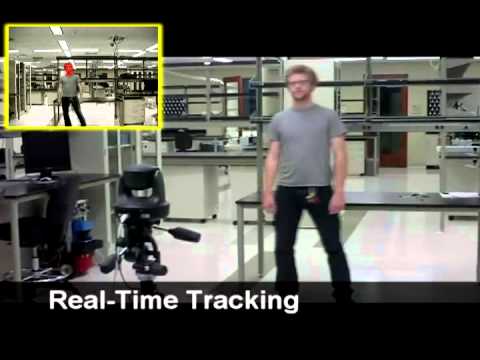I want to build a remotelly controlled/autonomous turret. I know how to build a remotelly controlled turret - that seems simple, one double H-bridge IC (like l298 or l293D), two geared DC motors , code that receives data sent over serial and a simple application written in processing for mouse control.
The tricky part is how to turn a remotelly controlled turret into an autonomous turret. It seems that everyone has used RC servos + stationary mounted camera. This is cool and all but the method is limited as far as accuracy is concerned (think how RC servos are limited in range and accuracy and how that affects the whole system). In other words it's ok if all you want is something that can hit a human sized target at let say 30 feet max, but it isn't good enough for me. What is more most ppl use motion recognition algorithms based on comparing individual frames to sense motion.
So my idea is to use the same setup that I want to use on a remotelly controlled turret (geared DC motors) and this method of tracking >>
...but rather than facetracking I want to set it so that it tracks human shaped targets.
Basically speaking what I am saying is that:
A) I have a turret with geared DC motors
B) Camera is mounted on the gun so when the turret moves so does the camera
C) Speed and direction of turret is determined on the basis of position of sensed targets in respect to the centre of the camera view. In other words if centre of the target is 200 pixels to the left and 150 up processing programme sends data over serial to arduino to move both motors in the right direction. after a while teh target is closer to the centre of the camera view so the speed of motors is reduced.
What do you guys think? Is it feasible ? Do you think it will work ?
I do know I would need some way to sense if the target moves in respect to surroundings but I guess some sort of background tracking should be able to accomplish that
ohh BTW I deleted my previous topic on this as I think this has more to do about feasibility than motors and mechanics only
